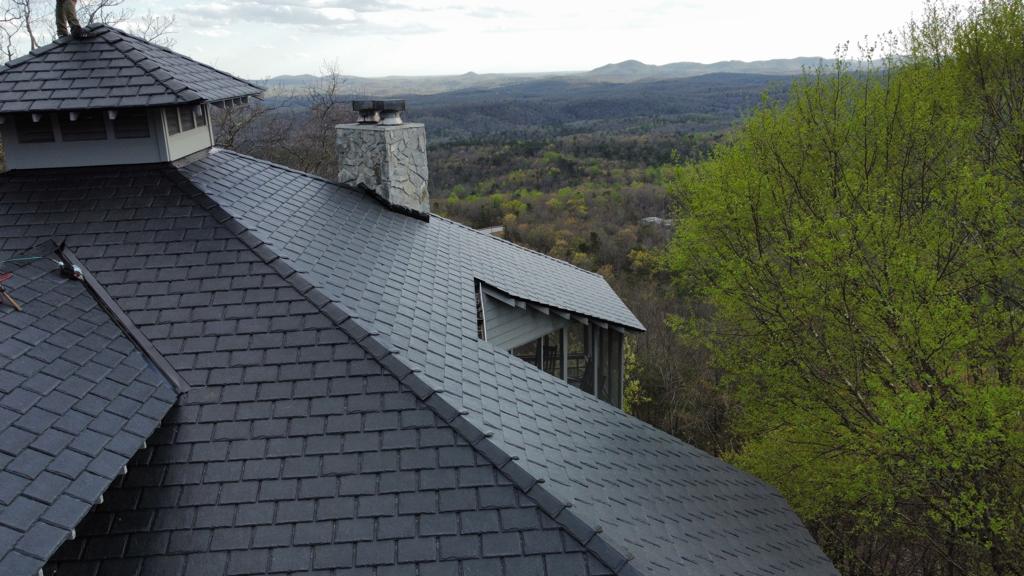
As synthetic shingles gain popularity in the roofing industry, many homeowners are curious about their manufacturing process. Understanding how these shingles are made can provide valuable insight into their durability, appearance, and environmental impact. At Palmetto Roofing Specialties, we pride ourselves on offering top-quality synthetic roof shingles that combine modern technology with traditional aesthetics. In this article, we’ll explore how synthetic shingles are made, highlighting the key steps and materials involved.
Synthetic shingles are primarily made from a combination of recycled materials, such as engineered polymers or plastic and rubber. These materials are often chosen because of their durability, flexibility, and eco-friendliness. Some manufacturers, like DaVinci Roofscapes, opt for engineered polymers to ensure consistent quality and long-term performance, avoiding the variability found in recycled materials.
The manufacturing process starts with choosing high-quality raw materials. If recycled materials are used, they are cleaned and processed to remove any impurities. For engineered polymers, the raw materials are carefully selected to meet stringent quality standards.
The selected materials are blended and mixed to create a homogeneous compound. This helps to make sure the final product has uniform strength, flexibility, and color. Additives such as UV inhibitors and fire retardants are often included to enhance the shingles’ performance.
The mixed compound is then heated and molded into the desired shape using high-pressure molds. These molds are designed to replicate the appearance of natural roofing materials like cedar shakes or slate tiles. The high pressure ensures that the shingles are dense and durable, capable of withstanding harsh weather conditions.
To achieve a realistic look, the shingles are textured and colored to mimic natural materials. Advanced techniques are used to create grain patterns and chisel marks, adding a hand-crafted touch. The coloring process involves the use of high-quality pigments that are UV resistant, ensuring the shingles maintain their appearance over time.
Once molded and colored, the shingles are cured to enhance their strength and stability. This involves cooling them gradually to prevent any warping or deformation. The curing process ensures that the shingles are ready to withstand the rigors of installation and long-term exposure to the elements.
Quality control is a vital step during the manufacturing process. Each batch of shingles undergoes rigorous testing to ensure they meet industry standards for impact resistance, fire resistance, and weatherability. Manufacturers perform these tests to guarantee that their products provide reliable and long-lasting performance.
Understanding how synthetic shingles are made highlights several advantages they offer over traditional roofing materials:
At Palmetto Roofing Specialties, we are committed to delivering the best roofing solutions available. Synthetic shingles represent a modern advancement in roofing technology, combining durability, aesthetics, and environmental responsibility. Whether you’re considering a new roof or a replacement, understanding how synthetic shingles are made can help you make an informed decision to enhance the beauty and longevity of your home.
For more information on our roofing services and to schedule a free inspection, contact Palmetto Roofing Specialties today. We’re here to help you protect your home with top-quality roofing solutions you can trust.